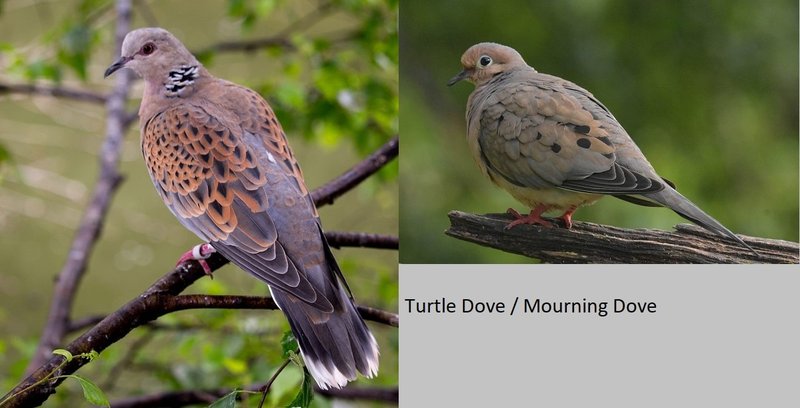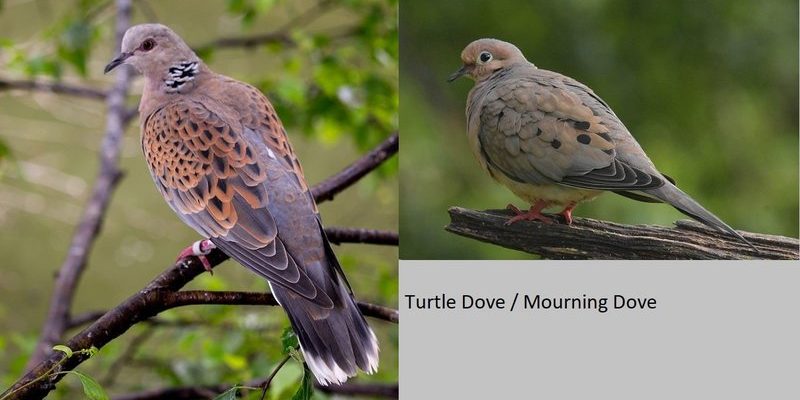
In the world of birds, the mourning dove holds a special place. With their gentle demeanor and distinctive calls, they often get mistaken for other cute, plump birds. But differentiating them from similar species can be a little tricky, especially if you’re new to birdwatching. So, grab your binoculars, and let’s dive into what makes the mourning dove unique, along with a few similar birds you might encounter on your next outdoor adventure.
Identifying the Mourning Dove
Let’s kick things off with a closer look at the mourning dove itself. This bird is often recognized by its slender build, long tail, and soft, grayish-brown feathers. You might notice a slight pinkish hue on its chest, and the edges of its wings can have a subtle, white trim. One fascinating feature is their eyes, which are usually surrounded by a small circle of dark skin.
When trying to spot a mourning dove, pay attention to its behavior. These birds are usually seen alone or in pairs, often foraging on the ground for seeds. Their cooing calls are gentle and drawn out, which isn’t just charming; it’s also part of their courtship ritual. You might think of their sound as a soft, melancholic tune—hence the name “mourning.”
Size and Shape
Mourning doves have a wingspan of about 18 to 22 inches, making them relatively small compared to some other birds. Their bodies are sleek and streamlined, allowing them to fly swiftly. In contrast, larger birds like the pigeon can be bulkier, making them a bit easier to spot because they often travel in flocks.
When comparing them to smaller birds, like sparrows, you’ll see that mourning doves are much taller and longer, especially with those striking tails. Recognizing their size can be a huge help in identifying them correctly in the wild.
Similar Bird Species
Now we can’t just talk about mourning doves without mentioning some of their look-alikes. Let’s explore a few similar bird species and how you can tell them apart.
Inca Dove
The Inca dove is often confused with the mourning dove due to its similar body shape and size. However, the Inca dove has a more scaled appearance on its wings, making it look quite different when you catch it up close. It also has a unique, softer cooing sound, which can be quite charming once you get used to it.
Inca doves tend to prefer more urban settings compared to mourning doves. You might find them strutting around parks or near bird feeders. If you hear a robust, short coo, you might just be hearing an Inca dove instead of a mourning one.
Rock Pigeon
Another bird that people often mistake for mourning doves is the rock pigeon. While they share the same general shape, there are notable differences in color and size. Rock pigeons can come in varied shades, from gray to white, often displaying more vibrant colors than the mourning dove’s muted palette.
Their cooing is a bit more pronounced, and rock pigeons are typically found in larger flocks, especially in city areas where food is plentiful. If you see a bunch of birds together, there’s a good chance they’re rock pigeons.
Behavior Differences
Beyond physical traits, the behaviors of mourning doves also set them apart. Mourning doves are generally shy and prefer to keep to themselves. They’re known for their gentle nature and soft communication, making their calls a delightful background melody in parks and gardens.
In contrast, birds like the European starling are much more boisterous. Starlings travel in large groups, creating a chaotic atmosphere and often overwhelming any peaceful moment. If you’re in a park and hear a ruckus, check for starlings, as they’re likely the culprits.
Feeding Habits
Mourning doves primarily feed on seeds, which they find on the ground. Watching them peck around can be quite entertaining! They often prefer small seeds like those from sunflowers and grains.
On the flip side, the American goldfinch, which is another small bird, has a broader diet that can include insects during the breeding season. It’s interesting how different species have distinct preferences that influence their habitat and behavior.
Breeding and Nesting
When it comes to breeding, mourning doves have quite an interesting approach. They typically mate for life and can produce several broods in a single season. The female builds a nest using twigs and grasses, often in low shrubs or tree branches.
In comparison, house sparrows are aggressive nest builders that often take over other birds’ nests. Their nests can be found almost anywhere, from eaves to closets. You might find it surprising just how adaptable these little guys can be!
Nesting Locations
Mourning doves prefer more sheltered environments for their nests, while house sparrows don’t shy away from human structures. If you’ve got a lot of birds hanging around your porch, it’s likely house sparrows claiming their territory.
Knowing these nesting preferences not only helps in identifying the birds but also gives insight into their behaviors and survival strategies.
Understanding the differences between the mourning dove and similar bird species is all about observing the details—size, sound, and behavior. With a little practice, you’ll soon notice the unique charm of the mourning dove, especially how it coos softly as it flits from tree to tree.
Next time you find yourself outside, take a moment to listen and look for these beautiful birds. You might discover something new! Whether you’re a seasoned birdwatcher or just starting, delving into the world of our feathered friends can be a delightful experience. So, keep your eyes peeled, and enjoy the serene presence of these wonderful doves in your outdoor spaces.

